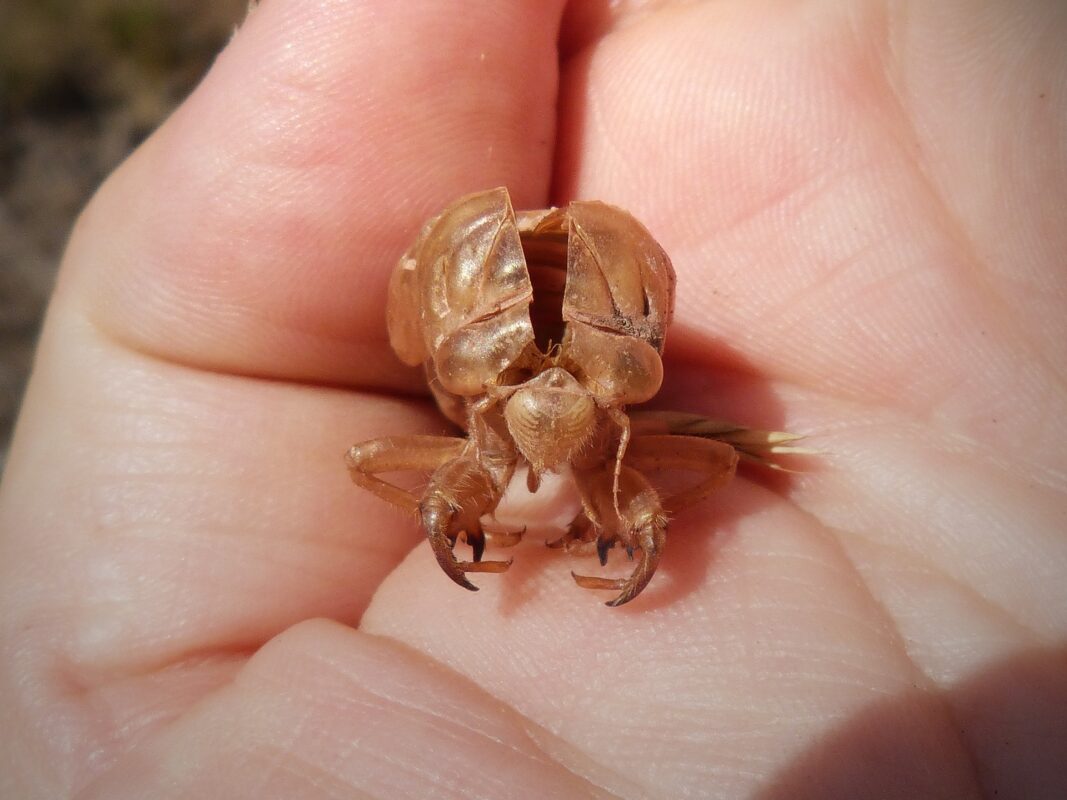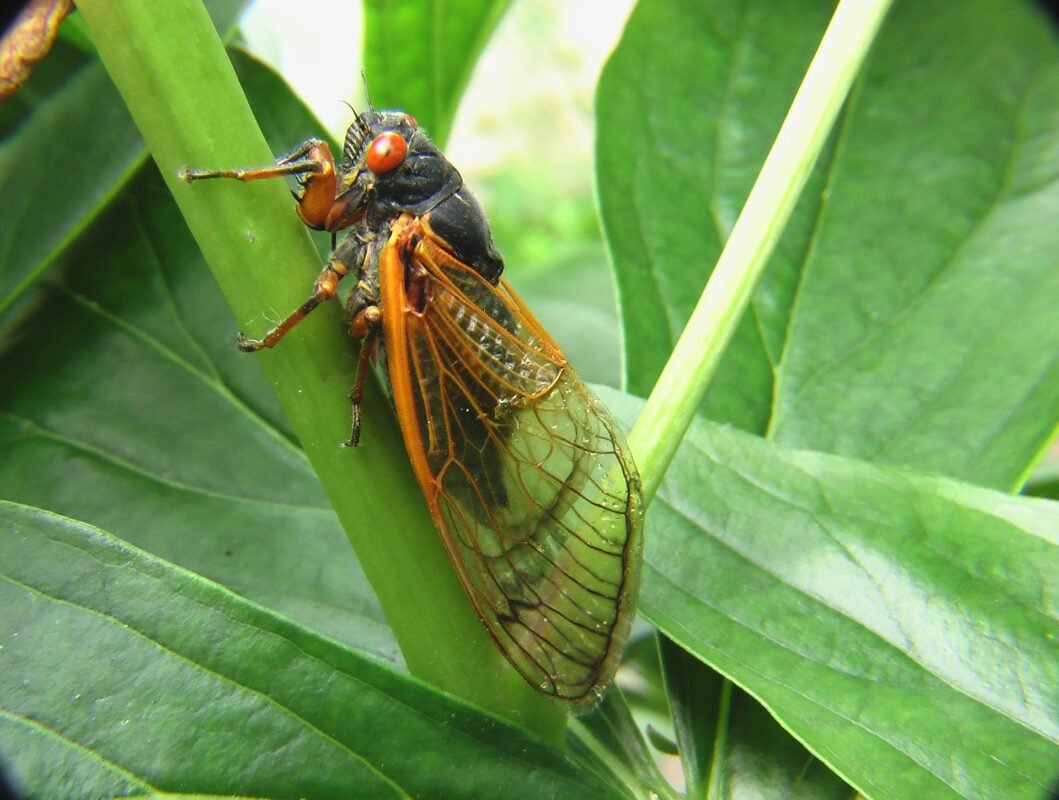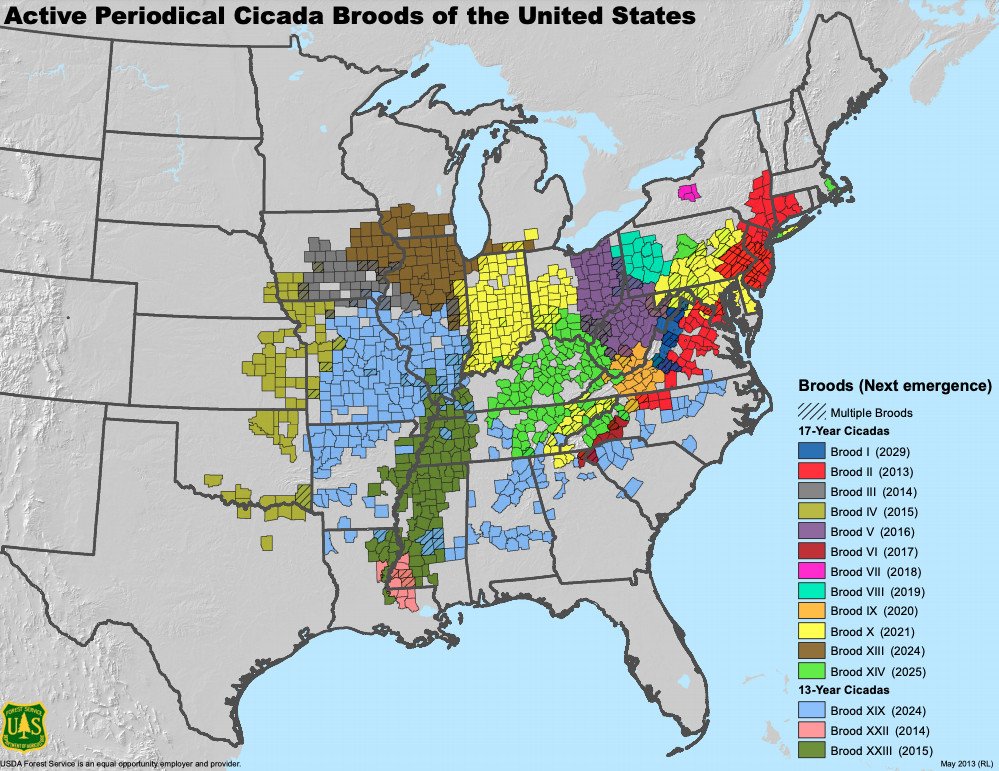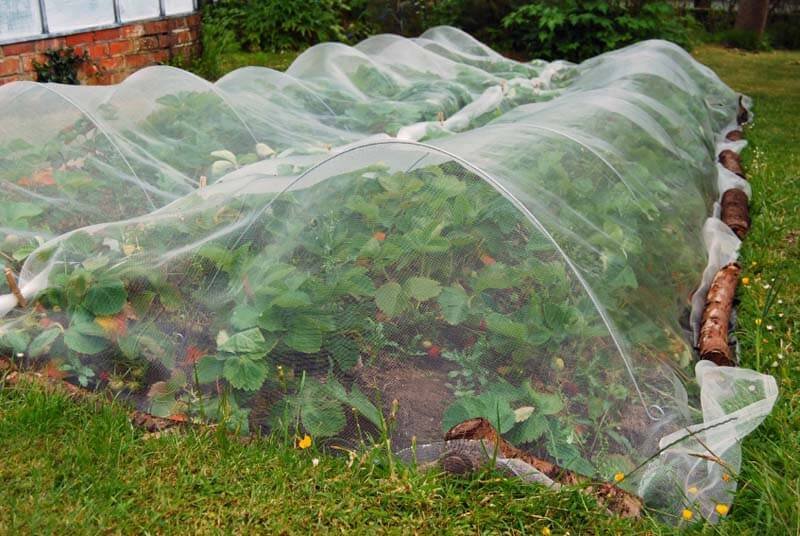Ultimate Cicadas Brood X Infestation Information

What are Cicadas?
When it’s very hot out, you might hear a high pitched whine or buzz. It’s loud and annoying. Scientists, who study these bugs, say the Cicada sound or buzz is between 80 and 100 decibels, which is equivalent to a lawn mower. As a kid, you might have collected their paper-like brown exoskeleton shells for war play. But, basically, there are two types of Cicadas — an annual type and a periodic type. This periodic type, you can set your watch by. They are on schedule to appear this year. In fact, Cicadas Brood X is scheduled to appear as soon as the ground reaches 64 degrees. So this is all of the Cicadas Brood X infestation information you need to know.

Brood X, that’s the Roman Numeral ten not “X”, is one of the largest groups of recurring, or periodic, cicadas. They can be found from northern Georgia to New York, west to the Mississippi River and in the Midwest. There can be as many as 1.5 million cicadas per acre, which brings the brood population into the trillions. The 2021 periodic cicadas map below shows, in yellow, where these cicadas will emerge but, as you can see, almost each year we are visited by periodic cicadas.

If you like Math, I don’t, but I like to give you all the info. Here’s the calculation to figure out when they might appear in your area:
To estimate soil temperatures, you need the daily high and low temperatures for the previous three days.
You can find that weather data at weather.gov/ look at the upper left-hand corner to input your zip code.
From that, determine the average daily temperature by adding the high and the low temperatures together and dividing by two.
Next, calculate the two-day and the three-day running temperature averages.
Finally, find the average of the two-day and three-day running average, and that will provide you with an estimate of the soil temperature at the cicada depths. The magic number is 64 degrees.
Will They Damage My Garden?

You probably want to know if they will eat your garden. No, they are not a locust which will eat everything in sight. Your vegetable garden and flowers are safe. The garden might even benefit from these bugs through nitrogen rich compost you create.
“The purpose of all life is just to reproduce. And as these cicadas are reproducing, they create situations that are good for the eastern deciduous forest,” Gene Kritsky said, a cicadas expert and entomologist at Mount St. Joseph University. The cicadas life cycle is short, 4 to 6 weeks at most, once they emerge.
“Their holes provide natural aeration for our clay-heavy soil; the damage caused by females laying eggs (called flagging) is a natural pruning for trees; they provided a “food pulse” for predators, which can cause population spikes; and their decomposition is a “nutrient cache” for plants.”
Five days after the cicadas emerge, the males will start screaming to attract a mate. Once they find one, they have a moment of silence. (Malaysia will ban me if I give out X rated details of mating so I skip that.) Then, females will lay eggs in the new growth branches of the trees, which can cause damage to younger trees. The males have 2 to 4 weeks to live, then they die.
“Add all those carcasses, nice June rain, and hot temperatures? They’ll stink.” Kritsky said.
By late July the eggs will hatch. The nymphs will crawl out of the tree branches and fling themselves to the ground and burrow down. By New Year’s Day, the cicadas will be 10 to 12 inches deep in the ground, waiting 17 years to come back out.
So, the short answer is that they can pose a threat to young trees. But, they are more of a bother to your ears. They can provide good compost material and a food source for predators. However, since males may confuse the sound of a lawn mower to their buzz, it’s best to do yard work at dusk or early in the morning when it is cool. The cicadas are less active at this time. You may want to wear long sleeves or wear a hat with screening, to avoid a swarm. Just one more reason to stay indoors. Do you see my eyes rolling?

Cicadas Protection and Clean Up
When cicadas emerge from the ground, they leave burrow holes about 1/2″ across and 3 inches deep. This is actually great for the soil. It’s what you would pay an aeration service to do during lawn care. See my post here about aeration.
- Avoid planting young trees or bushes during this 6 week period.
- Cover existing bushes or young trees with 1/4″ or less garden net or mesh. Make sure to wrap and tie it around the trunk to protect young saplings.
- Avoid using pesticides since this can affect predators that eat the cicadas carcasses. Cicadas’ entire lifespan is 6 weeks max, so they will be gone before you know it.
- Sweep up any dead cicadas daily, especially in drains, or gutters. Skim the swimming pool. Then, dispose of them in your compost. Turn the cicadas carcases under the compost pile or place a fresh layer of straw or grass clippings on the dead cicadas to avoid the smell.
I hope you do not have too much trouble with this Cicadas Infestation. Please let me know in the comments below if you have seen more of the cicadas as it warms up. Also, post pics on facebook if you have cicadas before and after photos. I love hearing from you! If you find my blogs interesting, please subscribe to my blog posts as it helps to bring other readers to my website.